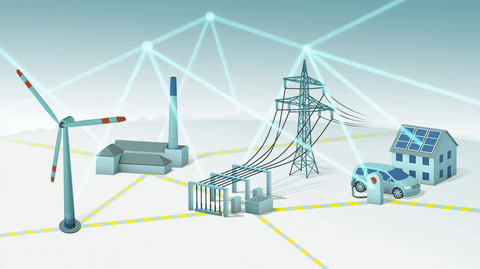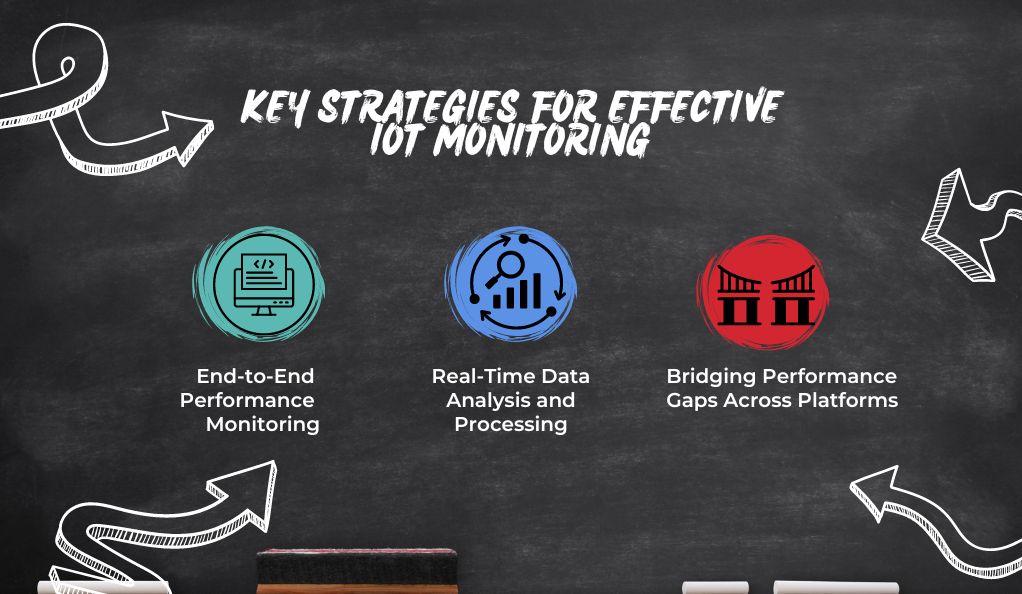Need IoT Monitoring Help? Check out the Ultimate Solution Guide!
IoT monitoring is like a guardian for the Internet of Things, keeping a watchful eye on numerous devices connected online. It’s crucial because it helps prevent problems, maintains efficiency, and enhances security. Through monitoring, businesses avoid big issues, and users enjoy smooth experiences. This guide delves into the methods and tools that make IoT monitoring effective, offering insights for both tech enthusiasts and everyday users.
Understanding the IoT Ecosystem
The IoT ecosystem is a complex network, but it’s easier to understand when we break it down into its basic components. Think of it as a puzzle, where each piece plays a specific role.
- Devices: These are the physical gadgets like sensors, smartwatches, and home appliances. They are the frontline soldiers, collecting data from their surroundings.
- APIs (Application Programming Interfaces): APIs are the messengers. They help different software and devices to talk to each other. It’s like a common language that lets your smartwatch communicate with your phone.
- Gateways: These act as the bridge between devices and the cloud. They collect data from various devices and send it to a central system for processing.
- Networks: The networks are the highways. They transport data from one point to another. This can be through Wi-Fi, Bluetooth, or cellular networks.
The Role of IoT in Business and Technology

IoT has a huge impact on both business and technology:
- In Business: IoT helps in making smarter decisions. For instance, a factory using IoT sensors can monitor machine performance and predict maintenance needs. This leads to less downtime and more productivity.
- In Technology: IoT pushes the boundaries of what’s possible. It leads to innovations in fields like smart homes, healthcare, and even smart cities.
Bullet List Example:
- Smart Homes: Controlling lights, temperature, and security remotely.
- Healthcare: Wearable devices monitoring patient health in real-time.
- Smart Cities: Traffic management systems reducing congestion.
Challenges in IoT Monitoring
IoT monitoring is not without its challenges. As the number of connected devices grows, so do the complexities in managing them.
Security Concerns with Connected Devices
The first major challenge is security. With many devices connected to the internet, the risk of cyber attacks increases. Here’s why:
- Same Passwords: Many devices come with default passwords, which are easy targets for hackers.
- Software Updates: Some devices don’t update automatically, leaving them vulnerable to new threats.
- Data Theft: Since devices collect personal data, there’s a risk of this information being stolen.
Managing Large Scale IoT Deployments
Handling a large number of IoT devices is like trying to manage a huge, spread-out team. It includes:
- Device Management: Keeping track of thousands of devices and ensuring they are all working correctly.
- Data Overload: Dealing with the massive amount of data these devices generate.
- Network Management: Ensuring the network can handle the traffic from all these devices.
Ensuring Consistent Performance
Lastly, consistent performance is a key challenge. This involves:
- Reliability: Making sure devices are always functioning as they should.
- Speed: Ensuring data is processed and transferred quickly.
- Accuracy: Guaranteeing that the data collected is correct and useful.
Bullet List Example:
- Security Measures: Regular updates, unique passwords.
- Efficient Management: Using software for tracking and analysis.
- Performance Checks: Regular testing for speed and accuracy.
Key Strategies for Effective IoT Monitoring
To navigate the challenges of IoT monitoring, there are several key strategies that can be employed. These strategies ensure that IoT systems not only function smoothly but also remain secure and efficient.

End-to-End Performance Monitoring
First and foremost, it’s important to monitor the entire IoT system from end to end. This means:
- Tracking Device Health: Regularly checking if each device is functioning correctly.
- Monitoring Network Performance: Ensuring the network is fast and reliable.
- Analyzing Data Flow: Watching how data moves from devices to the cloud and back.
Real-Time Data Analysis and Processing
Real-time data analysis is crucial. It helps in:
- Immediate Problem Detection: Spotting issues as soon as they occur.
- Quick Decision Making: Allowing for faster responses to data insights.
- Enhanced User Experience: Providing better services to users through timely data usage.
Bridging Performance Gaps Across Platforms
Finally, it’s vital to bridge any performance gaps across different platforms and technologies used in IoT.
This involves:
- Integration: Making sure different systems and devices work seamlessly together.
- Standardization: Using common standards for data and communication.
- Optimization: Continuously improving systems for better performance.
Bullet List Example:
- System Integration: Linking various IoT components effectively.
- Data Standardization: Ensuring uniform data formats.
- Continuous Optimization: Regular updates and upgrades.
Advanced Tools and Technologies for IoT Monitoring
To effectively manage and monitor IoT systems, leveraging advanced tools and technologies is essential. These tools not only simplify the process but also enhance the accuracy and efficiency of IoT monitoring.
Using Broadcom for Comprehensive Coverage
Broadcom is a standout tool in the realm of IoT monitoring, offering comprehensive coverage that spans across devices, networks, and applications. It is adept at dynamically analyzing systems and processing large volumes of data swiftly. The insights provided by Broadcom are actionable, enabling improvements in performance and enhancing user experiences.
ManageEngine OpManager: Features and Capabilities
ManageEngine OpManager is another potent tool in IoT monitoring, known for its versatility. It can monitor a wide range of components including servers, network devices, and virtual environments. Its user-friendly interface eases the tracking and management of IoT components, and its proactive alert system is invaluable for timely notifications about performance or network issues.
MetricFire and Other Leading Tools
MetricFire offers a comprehensive monitoring approach, featuring customizable dashboards for real-time monitoring and analysis, and scalable monitoring which adapts to the size and complexity of IoT setups. Its integrated analytics are particularly useful for effective processing and interpretation of IoT data.
Comparison of Different IoT Monitoring Tools
In comparing these tools, Broadcom is best suited for large IoT ecosystems with its end-to-end monitoring and data analysis capabilities. ManageEngine is ideal for diverse IoT environments, thanks to its device management features and user-friendly interface. MetricFire shines in data-intensive IoT applications, with its scalability and customizable dashboards.
IoT Data Collection and Analysis
The collection and analysis of data is a cornerstone in IoT monitoring. This process involves gathering information from various devices and then making sense of it to improve decision-making and operations.
Techniques for Gathering IoT Data

Gathering data in an IoT system involves several techniques:
- Sensor Data Collection: IoT sensors on devices collect a wide range of data, from temperature to movement.
- Real-Time Data Capture: Many systems are designed to collect and transmit data in real time, providing up-to-the-minute insights.
- Automated Data Aggregation: Systems often automatically compile data from various sources, making it easier to analyze.
Analyzing Data for Actionable Insights
Once data is collected, the next step is analysis:
- Pattern Recognition: Analyzing data to identify trends and patterns that can indicate performance issues or opportunities.
- Predictive Analysis: Using data to predict future trends or potential system failures.
- User Behavior Analysis: Understanding how users interact with IoT devices can lead to improved user experiences.
This data collection and analysis not only help in troubleshooting and maintaining the IoT ecosystem but also play a vital role in advancing IoT technology by providing valuable insights into system performance and user interactions.
Enhancing IoT Security and Performance
Maintaining security and ensuring consistent performance are critical aspects of IoT monitoring. This section delves into how to enhance both these elements effectively.
Role of Continuous Testing and Updates
Continuous testing and regular updates play a pivotal role in maintaining IoT security:
- Regular Software Updates: Keeping IoT device software up-to-date is crucial for security. Updates often patch vulnerabilities that could be exploited by hackers.
- Continuous Security Testing: Regular testing for potential security breaches helps in identifying and fixing security gaps.
- Firmware Management: Ensuring that the device firmware is current and consistently monitored for any security threats.
Encryption and Authentication Measures
Implementing robust encryption and authentication measures is essential:
- Data Encryption: Encrypting data transmitted from IoT devices to the network prevents unauthorized access and data breaches.
- Strong Authentication Protocols: Implementing strong authentication mechanisms ensures that only authorized personnel have access to IoT device controls and data.
Managing Bandwidth and Signal Strength
Proper management of bandwidth and signal strength is crucial for performance:
- Network Bandwidth Management: Ensuring there is sufficient bandwidth for all IoT devices prevents network congestion and performance degradation.
- Signal Strength Optimization: Strong and stable signal strength is vital for the uninterrupted performance of wireless IoT devices.
Conclusion
In our journey through IoT monitoring, we’ve delved into its key aspects, from understanding its complex ecosystem to the strategies and tools essential for effective management. This guide underscores the importance of IoT monitoring in ensuring efficient, secure operations in an interconnected world.
We’ve tackled challenges like security risks and the complexities of large-scale IoT deployments, highlighting how advanced tools like Broadcom, ManageEngine OpManager, and MetricFire can enhance system performance and security. Through effective data collection and analysis, continuous updates, and robust security measures, organizations can safeguard their IoT ecosystems.


Leave a Reply